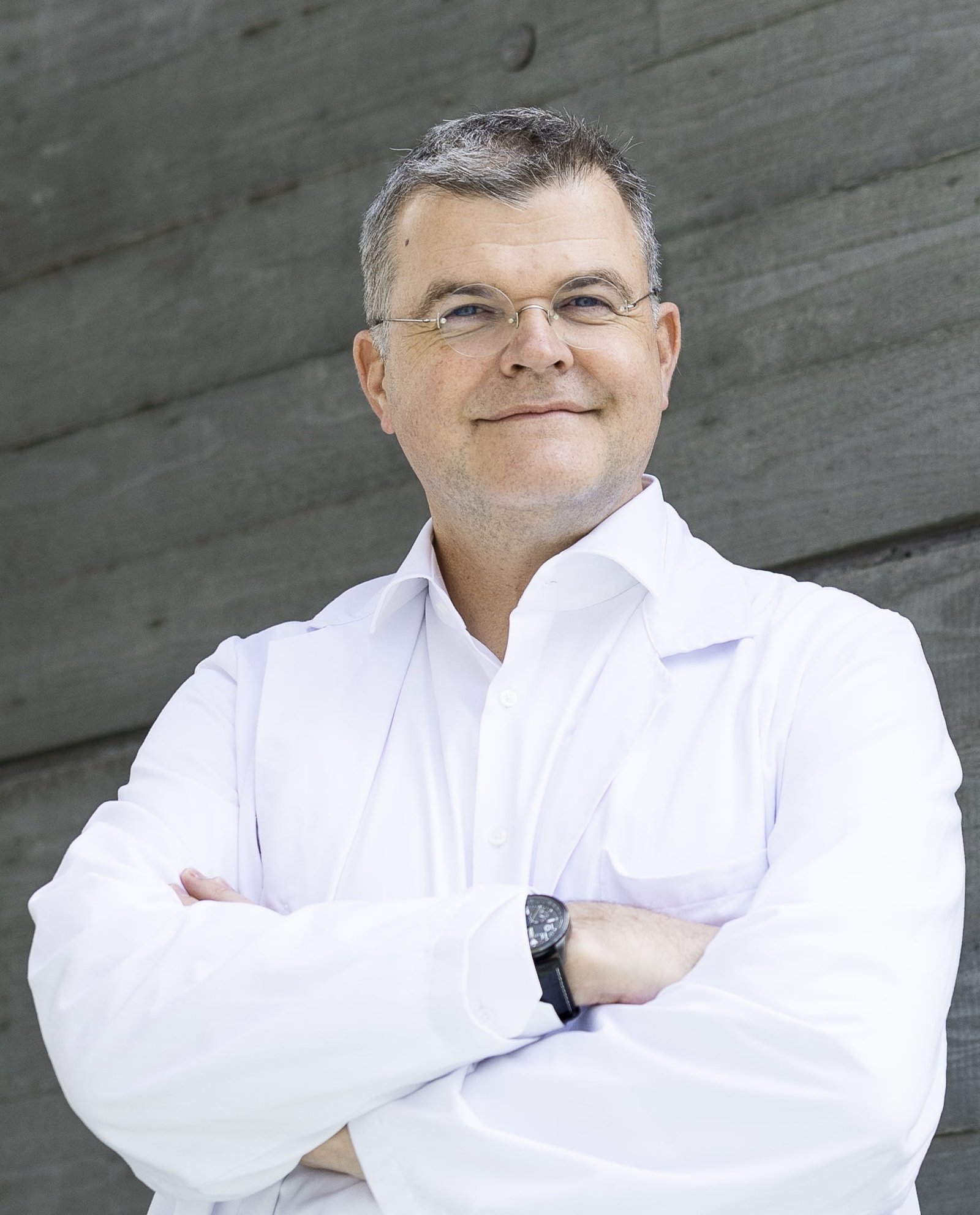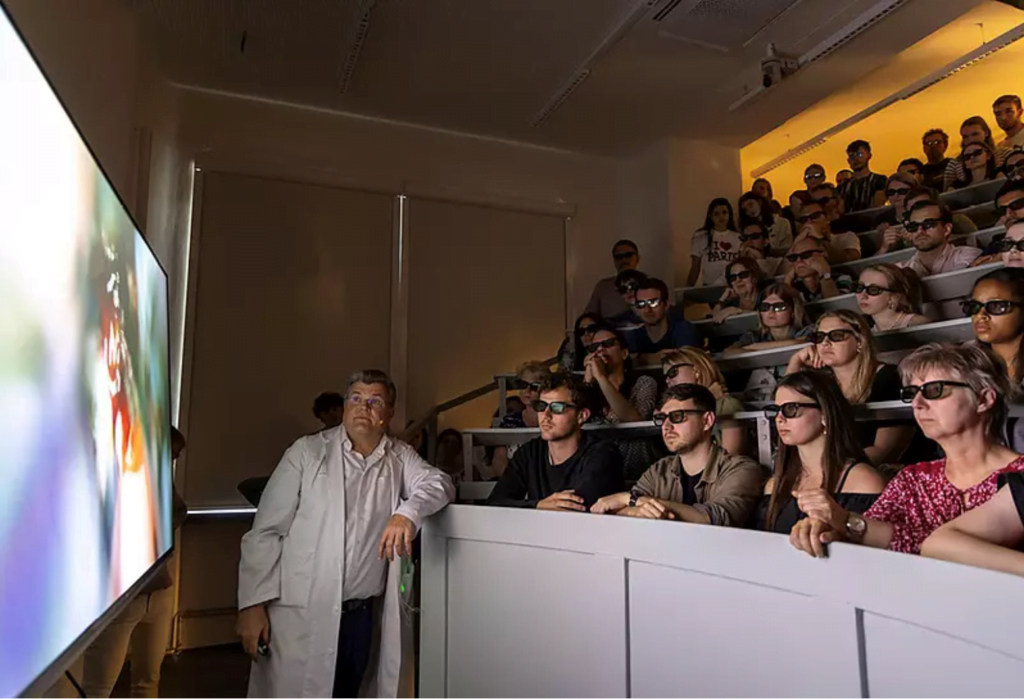-
Case Studies
-
- Rediscovering the Skies: Flight Simulator Brought to Life with GeoBox Technology
- Unlocking the Future of Learning
- Projection Based Immersive Learning: NOW and The Future of Education and Training
- GeoBox Unveiling the Future of Neurosurgery with 3D Technology: Interview Professor Wolfsberger (Austria)
- Creating large projection in School Theater for multiple purposes (Netherlands)
- Secta Immersive Enhances Trainings in Immersive Rooms with GeoBox
-
- GeoBox and Panasonic Projectors Immersify Kuala Lumpur
- Elevating Immersive Art to New Heights: GeoBox in Hyundai Futurenet’s Le Space
- Immersive Multimedia Installation at Museo del Lago – Montemurro (Italy)
- Digital art for Karuizawa New Art Museum's special exhibition"Irreplaceable Things - Earth, Landscape, and Environment"
- How To Enhance Museum Visual Experience with Immersive Projection Technology
- Museums in the Digital Era: Tackling Challenges and Learning from Teylers Museum (NL)
- GeoBox Enhancing Historical Landmarks with Immersion: Fort Victor Emmanuel (France)
- A Journey into Immersive Aquarium: The Deep (Hull, UK)
- 125 years BOSCH in the UK: Powered by GeoBox and Panasonic
- Immortalizing Media Heritage In the Media Museum (Hilversum, NL)
- Media museum Sound & Vision in the Netherlands
- Dive Into History with Geobox (Brugge, Belgium)
- Immersive projection installation in Switzerland
- GeoBox support Slovakia Pavilion in EXPO2020
- Experience F-16 at National Military Museum (Soest, Netherlands)
- Mori Building Digital Art Museum: Epson teamLab Borderless
- The 10th annual Korea Gyeongju World Culture Expo
- Projection mapping for museum
- GeoBox recreates the Fifth Aztec Sun at Stuttgart’s Linden Museum
- Discovering the image control solution behind Digital Art Museum
- Show all articles (5) Collapse Articles
-
- Esports AV Integration at Its Best: GeoBox Powers the ZOWIE Gaming Experience Center
- Elevating Immersive Art to New Heights: GeoBox in Hyundai Futurenet’s Le Space
- GeoBox Transforms Interior Design through Immersive Technology (Andalusia, Spain)
- Lifesize Plans - Revolutionizing Architectural Visualization
- Immersive Fusion: The Technological Creativities of Ragdale Hall Spa's Thought Zone
- Illuminating Hope: The Hanbit Tower Christmas Project of (Korea, 2020)
- GeoBox Projection Mapping in Japan Kyoto Kodai-ji Temple
- Elevating the Shopping Experience: IKEA's Immersive Technology in the Heart of Paris (France)
- 125 years BOSCH in the UK: Powered by GeoBox and Panasonic
- Sony Professional Display at OMR 2023 (Hamburg, Germany)
- The Holodeck: A Futuristic Meeting Space
- How G413 elevate guest experience at the luxurious Andreus Resorts
- Immersion in Yoga studio
- GeoBox adds edge-blending interaction to Vodafone’s flagship store in Netherland
-
-
Technical Articles
-
- MSFS 2024 Meets GeoBox M813: The Ultimate Guide to Immersive Flight Simulation
- How to use ChromeBox for Immersive display
- How To Enhance Museum Visual Experience with Immersive Projection Technology
- S902, Improve the effectiveness of your large display system
- Simplify your content preparation workflow with GeoBox
- A Guide for Effortless Immersive Experience Setup in 5 Minutes
- The Synergy of Using BrightSign Player with GeoBox video Controller
- Seamless Edge Blending: GeoBox's Black Level Uplift Solution for AV Professionals
- GeoBox New 810 Series: Elevating Pro AV Excellence
- Synergy of Digital Signage Player and Video Controller
- HDMI Technologies and Cables: A Guide for Professional AV Technicians
- Unveil GeoBox mini edge blending and warping box: G111 / G112
- The new range of All-In-One edge blending solutions - M810 series
- GeoBox in ISE2022
- G901, all-round multi-purpose controller: Multi-viewer, ultra-high resolution, 3D, Seamless switching & more..
- A better solution for your multi-projector edge blending project
- 8K input timing support in all GeoBox solutions
- How to display a large image using multiple projectors?
- Epson x GeoBox 8K/4K demo event
- 4K projectors edge blending and warping
- 4K projector edge blending, warping controller
- Immersive display solution
- How to plan for a large projection system?
- GeoBox G901 4K60hz input and output processor is now available in Europe
- Projection mapping for museum
- Projection mapping technology from GeoBox
- Edge blending calculator for multi-projector project planning
- Reliable Hardware-Based Video Processing for Professional AV Installations
- Show all articles (13) Collapse Articles
-
- How to use ChromeBox for Immersive display
- Digital art for Karuizawa New Art Museum's special exhibition"Irreplaceable Things - Earth, Landscape, and Environment"
- S902, Improve the effectiveness of your large display system
- Simplify your content preparation workflow with GeoBox
- The Synergy of Using BrightSign Player with GeoBox video Controller
- Synergy of Digital Signage Player and Video Controller
- HDMI Technologies and Cables: A Guide for Professional AV Technicians
- GeoBox in ISE2022
- G901, all-round multi-purpose controller: Multi-viewer, ultra-high resolution, 3D, Seamless switching & more..
- 8K input timing support in all GeoBox solutions
- 4K in-out Video wall controller with Multi-viewer - 'world first'
- Video wall controller: Top 5 reasons why using it
- GeoBox G901 4K60hz input and output processor is now available in Europe
-
News Letters
GeoBox Unveiling the Future of Neurosurgery with 3D Technology: Interview Professor Wolfsberger (Austria)

Prof. Stefan Wolfsberger, Neurosurgery, Med Uni Graz
In the ever-evolving realm of neurosurgery, a remarkable transformation is underway, driven by the seamless integration of 3D technology. In a recent exploration of this burgeoning frontier, we have been astounded by the revolutionary strides that 3D technology has taken in modern neurosurgery. At the forefront of this monumental shift is the visionary Professor Stefan Wolfsberger, an individual whose passion for 3D extends far beyond the surgical theater, encompassing photography and skiing. It is this unique blend of expertise that positions him as an ideal candidate to harness the boundless potential of 3D technology.
3D Technology's Resounding Impact on Modern Neurosurgery
The infusion of 3D technology into neurosurgery has wrought a profound transformation upon the field, endowing it with a panoply of unprecedented benefits that are amplifying patient care, surgical precision, and educational efficacy.
Elevated Surgical Precision
The infusion of 3D technology has ushered in a new era of surgical precision, underpinned by advanced imaging techniques like magnetic resonance imaging (MRI) and computed tomography (CT) scans. These techniques have endowed neurosurgeons with intricate, spatially accurate 3D renderings of the brain and spinal cord. The resulting 3D imagery stands as an invaluable asset in surgical planning and intraoperative navigation, allowing for the visualization of intricate anatomical structures with unparalleled clarity. This newfound clarity, in turn, translates into safer and more efficacious surgical procedures.
Enhanced Patient Outcomes
The heightened visual acuity bestowed by 3D technology equips neurosurgeons with the tools needed for more precise diagnoses and individually tailored treatment plans. This, in turn, has ushered in a new era of improved patient outcomes, with conditions such as brain tumors, vascular malformations, and neurological trauma being addressed with heightened precision and success rates.
GeoBox: A Catalytic Force for Advancement:
At the vanguard of this 3D renaissance in neurosurgery stands Professor Stefan Wolfsberger, an undisputed luminary in the field. Professor Wolfsberger’s role in harnessing the power of 3D technology to redefine the landscape of neurosurgical research and education cannot be overstated. His journey from the hallowed halls of the Medical University of Vienna to his current leadership of the Department of Neurosurgery at the Medical University of Graz has been a testament to his unwavering commitment to pushing the boundaries of the field. The catalyst for this transformation has been GeoBox, a revolutionary 3D visualization solution that has fundamentally altered the way neurosurgical research and education are conducted.
A Paradigm Shift in Research and Education
In medical neurosurgery research and education, one of the challenges facing medical professionals in this field is how to effectively share knowledge and experience with others, and this is where 3D technology can make a difference. GeoBox 3D convertion technology has empowered Professor Wolfsberger to revolutionize the pedagogical and research paradigms in neurosurgical science.
Improved Visualization
Medical devices may have special 3D formats that cannot be displayed in conventional 3D display devices. GeoBox G900 3D conversion technology allows Professor to convert 3D imaging data into a format that is easily viewable on most 3D devices. This can be particularly useful in medical research and education, where medical professionals can more effectively communicate their findings to others. This can lead to better collaboration, improved diagnosis and treatment planning, and ultimately, better patient outcomes.
Enhanced Learning
Another major benefit, mentioned by Professor Wolfsberger, is that it allows him to create immersive learning experiences. For example, by viewing 3D models of complex surgical procedures, medical students can better understand the intricacies of the human body. This can lead to more effective learning and better-prepared medical professionals.

A Radiant Future for Neurosurgery
In summation, the integration of 3D technology stands as a transformative force, propelling modern neurosurgery into an era defined by precision and efficacy. Professor Stefan Wolfsberger’s pioneering endeavors, catalyzed by the adoption of GeoBox, have not only propelled the field forward but have also illuminated a path towards a brighter future in neurosurgery.
As technology continues its relentless march forward and visionary leaders like Professor Wolfsberger remain at the forefront, the horizons of what can be achieved in neurosurgery will continue to expand. The symbiotic relationship between 3D technology and neurosurgical expertise promises to benefit practitioners and patients alike, unveiling the mysteries of the human nervous system with unparalleled clarity and precision. This partnership is poised to redefine the very essence of modern neurosurgery, forging a brighter future for all who walk this extraordinary path.